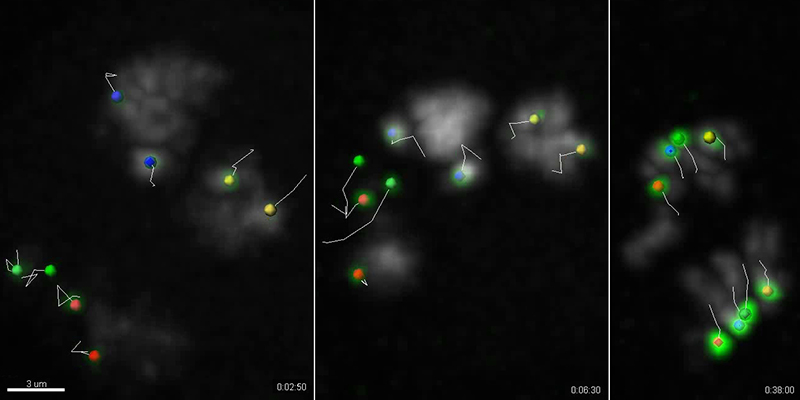Meiosis
Sexual reproduction entails the fusion of two haploid germ cells (an egg and a sperm in animals) into a diploid cell, i.e., the fertilized egg cell or zygote. A diploid cell has two copies of each chromosome, a maternal copy contributed by the egg and a paternal copy contributed by the sperm. The organism develops from the diploid zygote by repeated cell divisions and cell differentiation in a complex spatial and temporal program. When it reaches sexual maturity, it starts with the production of germ cells (eggs or sperm). For germ cell production, the process of meiosis is essential. Meiosis reduces chromosome ploidy from diploid back to haploid. Haploid cells have only a single copy of each chromosome. After meiosis, haploid cells differentiate into germ cells (egg or sperm). Mistakes that occur during meiosis can cause genetic disorders (like Down syndrome where too many copies of chromosome 21 are present in the zygote).
At the start of meiosis, all chromosomes within a diploid cell are duplicated during pre-meiotic S phase. Thereby each chromosome is converted into a pair of identical copies (sister chromatids). These pairs undergo further pairing into bivalent chromosomes. A bivalent contains four chromatids, the maternally as well as the paternally derived sister chromatid pairs of a given chromosome. After bivalent formation the cell progresses through two consecutive cell divisions, meiosis I and meiosis II, leading to four haploid cells. During each division, kinetochores are assembled at centromeres, a special region within each chromatid. The kinetochores provide sites where fibers of the spindle, a bipolar chromosome segregation apparatus, can attach. During the first meiotic division, the four sister kinetochores that are associated with a given bivalent chromosome attach in a pattern which allows separation of the two maternally derived sister centromeres to one spindle pole and of the two paternally derived sister centromeres to the opposite spindle pole. Bivalents are thereby split into univalent chromosome, comprised of two chromatids which have either both maternally or both paternally derived centromeres. During the second meiotic division, the two centromeres of each univalent are separated apart onto opposite spindle poles.
Crucial aspects of meiosis are poorly understood at the molecular level: How do the homologous, maternal and paternal chromosome copies find each other during the chromosome pairing process? What precludes pairing of non-homologous chromosomes? How is the correct pattern of kinetochore attachments to the bipolar spindle enforced during the first meiotic division? We perform experimental research to find answers. Moreover, meiosis in females and males is strikingly distinct. Drosophila male meiosis does not involve synaptonemal complex formation and meiotic recombination which are essential steps for the pairing of homologous chromosomes during female meiosis, as well as in most other animals. We study the alternative system for homolog pairing that operates in Drosophila males. We combine genetic approaches (transgenic strains, RNAi, CRISPR) primarily with time lapse imaging of meiotic processes.
Key publications:
